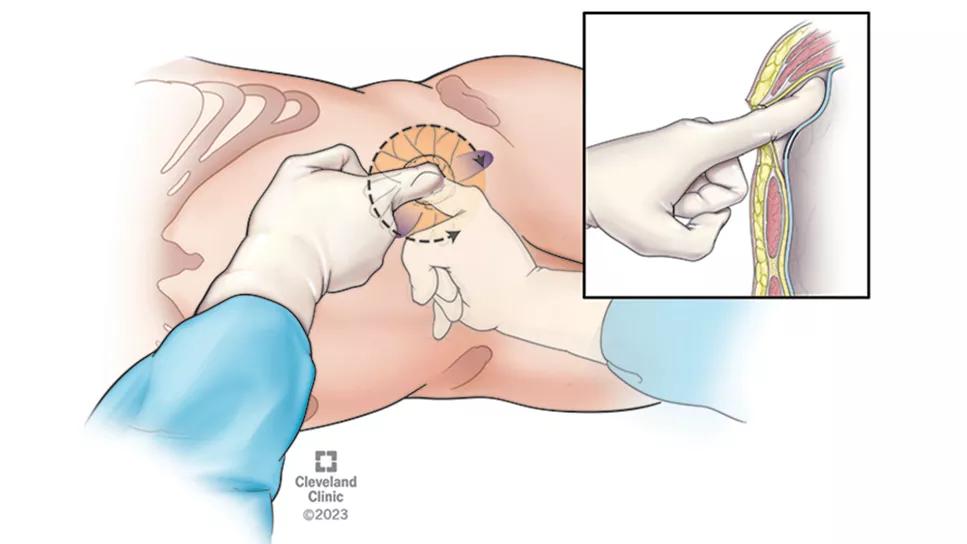The low anterior access approach using the single-port robot is gaining attention within the field

Pediatric urologists at Cleveland Clinic continue expanding the successful techniques used in adult patient populations to their pediatric patients. A low anterior access (LAA) approach for pediatric nephrectomy using the single-port (SP) robot is the latest innovation attracting attention within the field.
Advertisement
Cleveland Clinic is a non-profit academic medical center. Advertising on our site helps support our mission. We do not endorse non-Cleveland Clinic products or services. Policy
Julie Klock, MD, a urology resident, along with staff pediatric urologists Jessica Hannick, MD, and John (Jack) Weaver, MD, presented an award-winning video abstract at the 2025 Annual American Urological Association Meeting in Las Vegas that describes the technique and its advantages.
LAA is a novel approach that utilizes one small inguinal incision and allows for access directly into the retroperitoneal space. Cleveland Clinic urologists have previously combined the LAA approach with the SP robot for pediatric pyeloplasties and have now applied this technique to pediatric nephrectomy.
“The SP robotic system allows us to regionalize surgeries further and avoid the intraperitoneal space,” says Jihad Kaouk, MD, Chair of the Department of Urology at Cleveland Clinic. “With the addition of LAA, we can spare upper abdominal muscles, improve cosmesis, and decrease postoperative pain, creating a better perioperative and postoperative experience for our patients.”
Dr. Kaouk and the team at Cleveland Clinic were the first to report using LAA with the SP robot for adult pyeloplasty and retroperitoneal partial nephrectomy.
Approaches to simple nephrectomy have evolved significantly in the past decade. Prior to minimally invasive techniques, surgeons performed open surgery using a large flank incision near the ribs. The incision penetrated various muscle layers and was likely to result in significant postoperative pain leading to prolonged recovery.
The advent of robotics ushered in smaller incision access points through the abdominal wall, resulting in one to four incisions up to 1 cm each. The combination of the SP robot and LAA approach took this one step further, affording surgical access with a single 2.5 cm to 3 cm, lower abdominal incision. Cleveland Clinic urologic surgeons familiar with the technique note that it heals well and has better cosmesis. Patients also report excellent postoperative pain control.
Advertisement
While the pediatric experience is relatively new, in adult patients, the LAA approach in SP urologic surgeries is reducing and—in many cases—eliminating the need for postoperative opioids, according to multiple reports and extensive Cleveland Clinic experience.
Patients are going home earlier, too. Depending on age and other timing factors, same-day surgery is often possible.
Dr. Hannick notes that ideal candidates are at least 18 months old, weigh more than 10 kgs, and are indicated for a kidney or ureteral surgery.
Dr. Hannick says that most urologists are trained to do robotic surgery using the multiport approach, and, understandably, there is a learning curve with any new technique. She adds that building a practice that includes the SP and LAA approach in children requires institutional and nursing support as well as a mentor/preceptor in adult general urology or urologic oncology.
“As with many new technical modalities, for now, the adult urology population is where most pediatric urologists will be learning these advanced techniques. When embarking on an SP robotic practice, observe cases, participate in simulations, and then start with proctored cases until you get comfortable,” concludes Dr. Hannick.
Advertisement
Advertisement

Retrospective study shows SGLT-2 inhibitors may lead to worse urologic outcomes

Least-invasive open-heart AVR option to date yielded rapid recovery in all cases

First single-port renal vein transposition reduces recovery time and improves outcomes

Rare pregnancy complication can lead to fetal demise

Approach offers a ‘middle ground’ between radical prostatectomy and active surveillance

Center touts the benefits of neonatal MIS, trains others on the approach

Revolutionizing pediatric urology with a new, less invasive approach

Applications, outcomes and untapped potential